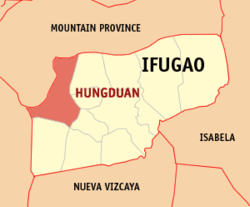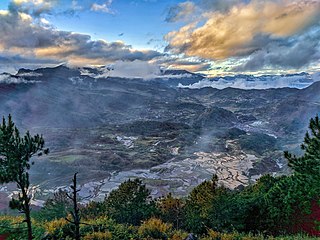
Bauko, officially the Municipality of Bauko is a 4th class municipality in the province of Mountain Province, Philippines. According to the 2020 census, it has a population of 32,021 people.

Aguinaldo, officially the Municipality of Aguinaldo, is a 2nd class municipality in the province of Ifugao, Philippines. According to the 2020 census, it has a population of 21,128 people.
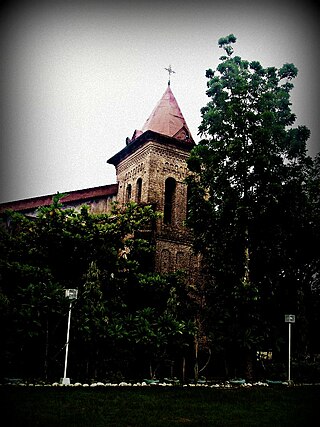
Lagangilang, officially the Municipality of Lagangilang, is a 5th class municipality in the province of Abra, Philippines. According to the 2020 census, it has a population of 14,914 people.

Langiden, officially the Municipality of Langiden, is a 5th class municipality in the province of Abra, Philippines. According to the 2020 census, it has a population of 3,576 people.

Licuan-Baay, officially the Municipality of Licuan-Baay, is a 5th class municipality in the province of Abra, Philippines. According to the 2020 census, it has a population of 4,566 people.

Pilar, officially the Municipality of Pilar, is a municipality in the province of Abra in the Cordillera Administrative Region of the Philippines. The population was 10,146 at the 2020 census.

San Isidro, officially the Municipality of San Isidro, is a 5th class municipality in the province of Abra, Philippines. According to the 2020 census, it has a population of 4,745 people.
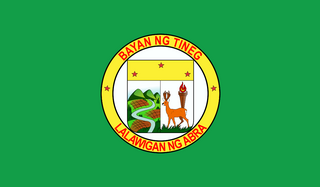
Tineg, officially the Municipality of Tineg, is a 2nd class municipality in the province of Abra, Philippines. According to the 2020 census, it has a population of 4,977 people.

Natonin, officially the Municipality of Natonin, is a 4th class municipality in the province of Mountain Province, Philippines. According to the 2020 census, it has a population of 10,339 people.

Sadanga, officially the Municipality of Sadanga is a 5th class municipality in the province of Mountain Province, Philippines. According to the 2020 census, it has a population of 8,427 people.
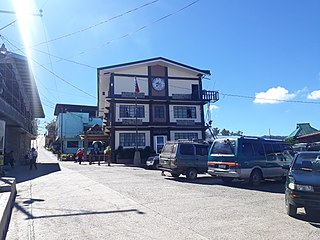
Tublay, officially the Municipality of Tublay, is a 5th class municipality in the province of Benguet, Philippines. According to the 2020 census, it has a population of 19,429 people.

Alfonso Lista, formerly known as Potia, officially the Municipality of Lista is a 3rd class municipality in the province of Ifugao, Philippines. According to the 2020 census, it has a population of 34,061 people.

Asipulo, officially the Municipality of Asipulo is a 5th class municipality in the province of Ifugao, Philippines. According to the 2020 census, it has a population of 15,963 people.

Banaue, officially the Municipality of Banaue is a 4th class municipality in the province of Ifugao, Philippines. According to the 2020 census, it has a population of 20,652 people.

Hingyon, officially the Municipality of Hingyon is a 5th class municipality in the province of Ifugao, Philippines. According to the 2020 census, it has a population of 9,930 people.

Kiangan, officially the Municipality of Kiangan is a 4th class municipality in the province of Ifugao, Philippines. According to the 2020 census, it has a population of 17,691 people.
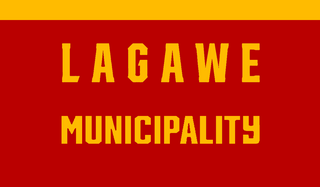
Lagawe, officially the Municipality of Lagawe is a 4th class municipality and capital of the province of Ifugao, Philippines. According to the 2020 census, it has a population of 18,876 people.
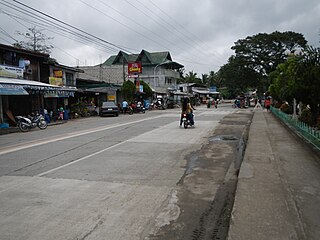
Lamut, officially the Municipality of Lamut is a 4th class municipality in the province of Ifugao, Philippines. According to the 2020 census, it has a population of 26,235 people.

Mayoyao, officially the Municipality of Mayoyao is a 4th class municipality in the province of Ifugao, Philippines. According to the 2020 census, it has a population of 15,621 people.

Tinoc, officially the Municipality of Tinoc is a 4th class municipality in the province of Ifugao, Philippines. According to the 2020 census, it has a population of 18,475 people.

